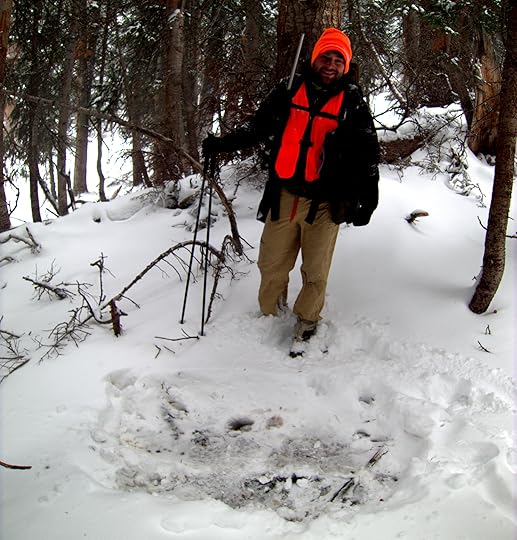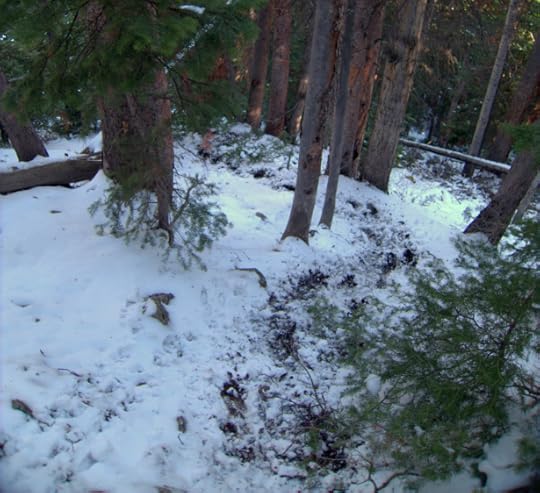Five strategies for hunting elk & mule deer in Colorado


Where are they?
You can’t shoot an elk or mule deer until you find one. Duh.
And for a beginner DIY hunter, learning to find one is probably the biggest challenge — at least, that was my experience. Where will the big game be, given the location, season, current and recent conditions, and time of day?
Otherwise, hunting is pretty easy:
To obtain a hunting license, take a Hunter Education Course and read the state hunting regulations.
To gear up, adapt an existing hunting gear list for your budget and hunting style.
To improve your shot accuracy, read up on long-range shooting and practice at a range. And,
To field dress an elk or deer, watch a few online instructional videos.
Five years ago I started hunting as a 30-something, and every season I still learn new things. But where, when, and how I have found elk and deer in the Colorado Rockies has become consistent. I’ve shared my observations below. They are skewed towards elk and the rifle seasons, since they have been my focus.
If you’re a beginner hunter with questions, or a long-time hunter who can add to or clarify my remarks, please leave a comment.
Universal considerations
Regardless of the strategy, this advice may be useful:
1. Hunting area selection
Find an area that offers diverse hunting options, so that you can can adjust for seasonal weather and the weather forecast. This year, for example, October was mild and dry, which allowed the game to remain in their summer range. However, a significant storm was forecasted for the first weekend of Third Rifle, with 10-20 inches of snowfall.
Before these circumstances were known, my hunting partner Steve and I had identified a handful of promising locations in the Flattops (GMU 12). Last-minute, we ruled out the low-elevation options, because we didn’t think the game would have migrated down yet; as well as the high-elevation options, because hunting at or above treeline in whiteout conditions is uncomfortable and, more importantly, generally impractical.
2. Seasonal behavior
In Colorado I don’t schedule any A-list high country projects beyond the end of September. Favorable conditions can continue into October, but I don’t count on it — the risk of winter storms is greater, and it’s more likely that early snowfall will stick at high elevations and on shady aspects. Also, the shorter and sub-freezing nights are more trying.
Elk and deer, meanwhile, seem completely unfazed by the arrival of fall and winter-like conditions. Until their food sources are thoroughly buried in snow, they will stay high, in their summer range, where they can eat and hide from hunters.
1. Work the rut
The mating season for elk peaks around the first day of fall, which coincides with the archery and muzzle-loading seasons. However, seasonal conditions can alter the timing, as happened in 2016 and 2017 — unseasonably warm temperatures delayed the onset. The peak rut for mule deer is later, in mid-November.
During the rut, bulls are vocal (making them easy to find) and they can be called in to close range by pretending to be a cow in heat or a competitive bull. To learn about this skill set, consult a bowhunter.
Some elk chatter may be heard during the First Rifle in mid-October. After that, they’re quiet — the rut is over, and they’ve been pressured by hunters. A cow call like the Primos Hoochie Mama can still be useful after the rut, however, like to calm suspicious cows or a shot bull.
What’s it like to hunt the rut? Watch the video below; a good but short snippet starts around 14:30.
2. Spot them in the open
Elk and deer are most active in the morning and evening, and may be seen grazing in open meadows and alpine during this time. Before these periods, find a spot with a commanding view (the larger the area the better), put on your patience hat, and start glassing.
In later seasons, this strategy may become less effective. Because of the hunting pressure, the game will become more active at night and will find browse where they are less vulnerable (i.e. less open spaces).

Two elk (and more out of view) graze in the alpine at 11,000 feet around sunrise. This is typical behavior, but less reliable in later seasons.
3. Stalk the timber
When they’re not grazing, the elk and deer bed down, usually among sub-alpine firs and Engleman spruce, aka “the dark timber.” This vegetation zone is found above the lodgepole pines and aspens, and below the alpine; as well as on shady north-facing slopes.
The dark timber is a natural bedding location: in warmer seasons, it remains cooler; when it’s cold or snowy, it provides thermal cover; and during hunting season, it’s tough for hunters to get within range without giving themselves away (e.g. noise, scent, or sight). Also, if some sunlight is getting through the canopy, it may be possible to graze without leaving this protected space.
For an excellent in-depth tutorial on hunting big game in the timber, read Elk Hunting: The Lost Art of the Timber Sneak, by Brody Henderson from MeatEater. In general, I consider it daytime entertainment — it gives me something to do between the morning/evening grazing periods, but it’s a low-odds strategy.

Fresh bedding area in thick timber, formerly occupied by a bull elk that Rob and I bumped in the middle of the day.
4. Track them
The snowpack in Colorado usually builds slowly, starting in October. A storm will roll through, drop a few inches, and move on. At the higher elevations and on shady aspects, this snow can stick for the rest of the winter; but at the lower elevations and on sunny south-facing aspects, it often melts off completely. It can snow in September, too, but it’s less common and it won’t last.
On average, the later rifle seasons are more likely to experience snowfall and to have greater snow coverage (i.e. deeper and more extensive). Tracking elk and deer is extremely easy if there’s snow on the ground, and sometimes below the snowline too — elk are heavy animals and leave obvious tracks in soft dirt that has recently melted out. If you’re fit, you can cover significant distances looking for tracks, in order to rule out areas (no fresh tracks = no game) or to hone in your hunt.
Snowpack is not a pure advantage, however. Old snow that has repeatedly melted and re-frozen is crunchy — and thus loud. Fresh snow is quieter, but “snowball snow” will makes a whomp-like sound when it’s stepped on.

Fresh tracks in fresh snow left by a small elk herd
5. Catch the migration
As conditions deteriorate in their summer range, the elk and deer herd up and begin to migrate towards their winter concentration areas. I’ve yet to observe the annual migration (it was delayed by warm fall weather in 2016 and 2017), but I think it’s normally a Fourth Rifle (mid-November) or Late season (through mid-January) affair.
The migration is a risky voyage: it puts the game closer to trailheads and roads (and hunters), and they are more easily seen at lower elevations, which are more open and less forested. However, their wintering grounds are not necessarily a free-for-all: there’s a lot of private land, and hunting is not permitted on all public lands (e.g. Boulder Open Space and Mountain Parks). Know the boundary lines and regulations.
The Colorado Hunting Atlas identifies known migration routes or zones. They are guidelines only.

Elk migration patterns in the Green Mountain Reservoir area, GMU’s 37 and 371.
The post Five strategies for hunting elk & mule deer in Colorado appeared first on Andrew Skurka.



